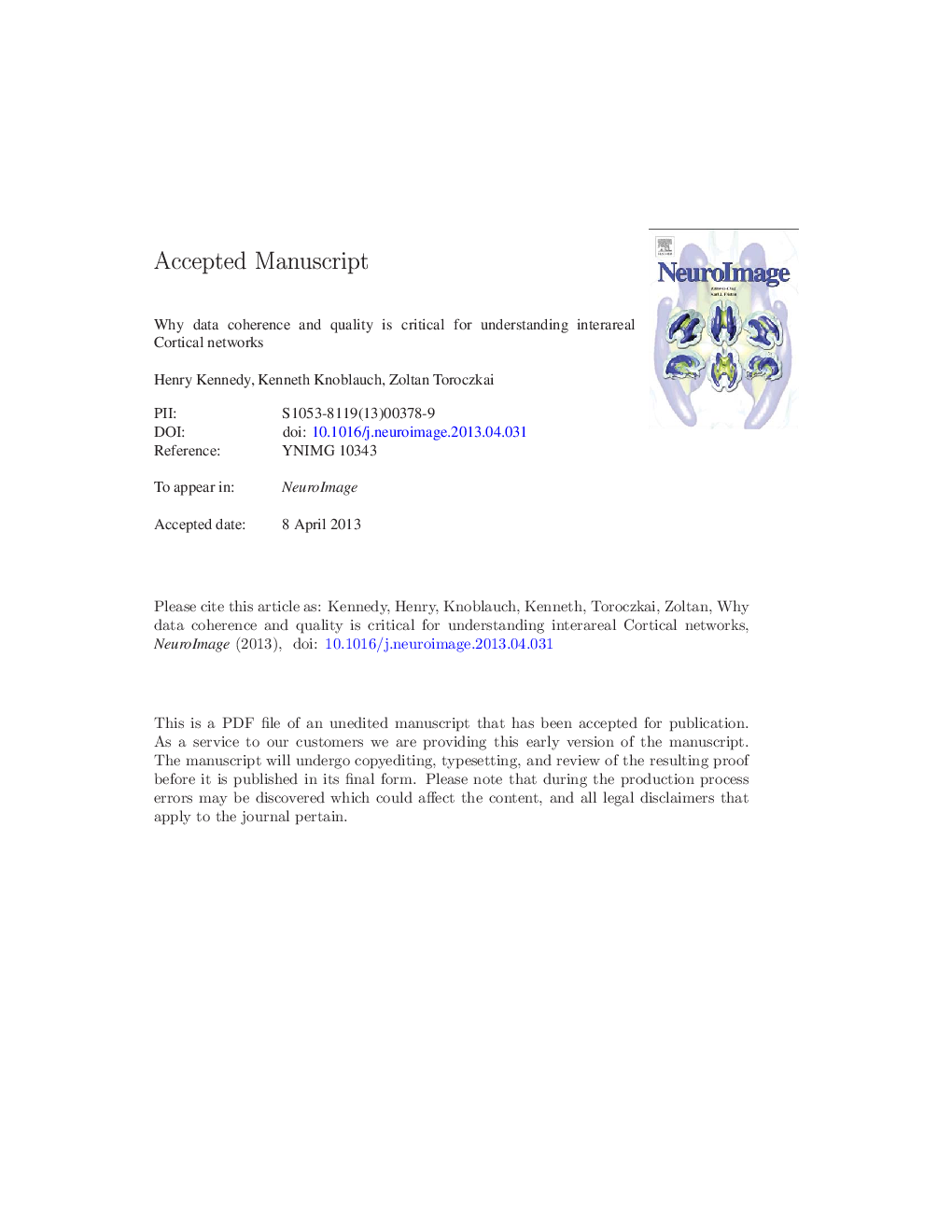| کد مقاله | کد نشریه | سال انتشار | مقاله انگلیسی | نسخه تمام متن |
|---|---|---|---|---|
| 6028670 | 1580924 | 2013 | 46 صفحه PDF | دانلود رایگان |
عنوان انگلیسی مقاله ISI
Why data coherence and quality is critical for understanding interareal cortical networks
ترجمه فارسی عنوان
چرا هماهنگی و کیفیت داده ها برای درک شبکه های کورتنی بین محیطی حیاتی است
دانلود مقاله + سفارش ترجمه
دانلود مقاله ISI انگلیسی
رایگان برای ایرانیان
کلمات کلیدی
موضوعات مرتبط
علوم زیستی و بیوفناوری
علم عصب شناسی
علوم اعصاب شناختی
چکیده انگلیسی
Numerous studies have investigated inter-areal cortical networks using either diffusion MRI or axonal tract-tracing. While both techniques have been used in non-human primates only diffusion MRI can be used in human. The advantage of axonal tract-tracing is that unlike diffusion MRI it has a high single-cell resolution, and most importantly gives the laminar origins and terminations of inter-areal pathways. It, therefore, can be used to obtain the weighted and directed cortical graph. Axonal tract tracing has traditionally been collated from multiple experiments in order to determine the large-scale inter-areal network. Collated data of this kind present numerous problems due to lack of coherence across studies and incomplete exploitation. We have therefore developed a consistent data base which uses standardized experimental and parcellation procedures across brains. Here we review our recent publications analyzing the consistent database obtained from retrograde tracer injections in 29 cortical areas in a parcellation of 91 areas of the macaque cortex. Compared to collated data, our results show that the cortical graph is dense. Density is a graph theoretic measure, and refers to the number of observed connections in a square matrix expressed as a percentage of the possible connections. In our database 66% of the connections that can exist do exist which is considerably higher than the graph densities reported in studies using collated data (7-32%). The consistent data base reports 37% more pathways than previously reported, many of which are unidirectional. This latter and unexpected property has not been reported in earlier studies. Given the high density, the resulting cortical graph shows other unexpected properties. Firstly, the binary specificity is considerably higher than expected. As we show, this property is a consequence of the inter-areal connection probability declining with distance. Secondly, small groups of areas are found to receive high numbers of inputs. This is termed a high domination and is analyzed by a graph theoretic procedure known as a minimum dominating set analysis. We discuss these findings with respect to the long-distance connections, over half of which were previously not reported. These so called new found projections display high specificities and play an important integration role across large regions. It is to be expected that the future examination of the 62 remaining areas will disclose further levels of complexity and enable construction of a weighted directed graph revealing the hierarchical complexity of the cortex.
ناشر
Database: Elsevier - ScienceDirect (ساینس دایرکت)
Journal: NeuroImage - Volume 80, 15 October 2013, Pages 37-45
Journal: NeuroImage - Volume 80, 15 October 2013, Pages 37-45
نویسندگان
Henry Kennedy, Kenneth Knoblauch, Zoltán Toroczkai,
